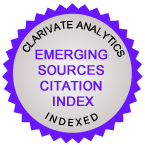Reputation, Qualification and Motivation as Value Drivers
Abstract
The article is devoted to the insider’s qualification, reputation and motivation as the shareholders’ value drivers. Using my personal experience and the theoretical analysis I came to the conclusion that any insider’s activity can be treated as value creative or value destroying in dependence of the market’s attitude to the insider’s personality, estimation of his qualification and motivation. This effect was called «the signaling inversion”. In accordance to this point I worked out a simple model which shows that insider’s activity can be counted as value enhancing if in prevailing opinions more than 2/3 of his investment and financial decisions are maid in shareholders’ best interests. In addition to it, the model proves the impossibility of the insider’s value-based motivation in the absence of the responsibility for the wrong decisions, particularly for the acceptance of value destroying projects. In conclusion there were presented some indirect evidences of the signaling inversion effect.
Keywords:
insiders, outsiders, agency problem, equity value, motivation, qualification, reputation, overinvestment, cross-subsidizing, investment and financial decisions, signaling effects, signaling inversion
Downloads
References
REFERENCES IN LATIN ALPHABET
Downloads
Published
How to Cite
Issue
Section
License
Articles of the Russian Management Journal are open access distributed under the terms of the License Agreement with Saint Petersburg State University, which permits to the authors unrestricted distribution and self-archiving free of charge.





